Struggling to choose between microfiber and cotton sheets? Let me help you get better sleep with the right decision.
Microfiber sheets1 are better for durability and price; cotton sheets2 win on breathability and comfort3—especially for sensitive skin and hot climates.

Still unsure which sheet type suits your lifestyle? Let’s go deeper into the fabric, breathability4, skin impact5, and even cost to find what works best for you.
What Are Microfiber Sheets?
Ever heard microfiber is just "cheap polyester"? That’s not the full story. Microfiber sheets can be soft, durable, and practical—if you know what to look for.
Microfiber sheets are made from tightly woven synthetic fibers that create a smooth, lightweight, and wrinkle-resistant bedding option.

Understanding Microfiber Sheets
Microfiber is a synthetic textile, often made from polyester or nylon. The fibers are thinner than a strand of silk, which gives microfiber sheets a sleek finish. These sheets use different weaving methods—brushed microfiber feels velvety, while flat-weave microfiber has a crisper texture.
Pros of microfiber sheets:
- Wrinkle-resistant
- Fast-drying
- Lightweight
- Affordable
Cons of microfiber sheets:
- Can trap heat
- Less breathable
- Prone to static
- Made from petroleum-based materials
They’re a common choice for kids’ rooms, guest beds, or high-turnover hospitality settings because they’re durable and easy to clean. If you sweat at night, though, you might wake up sticky. Let’s compare that with cotton next.
What Are Cotton Sheets?
Think cotton sheets are old-fashioned? Think again. They’re the gold standard for breathability and softness.
Cotton sheets are natural, breathable, and come in different quality levels like Egyptian, Pima, and Upland.

Types and Benefits of Cotton Sheets
Cotton comes from the cotton plant, and it’s woven into fabrics using different types of cotton fibers:
| Type | Fiber Length | Origin | Traits |
|---|---|---|---|
| Egyptian | Extra-long | Egypt | Silky, luxurious, expensive |
| Pima (Supima) | Long | U.S. | Smooth, strong, mid-price |
| Upland | Short | Global sources | Basic, most common, cheaper |
Cotton sheets are woven in two main styles:
Pros of cotton sheets:
- Breathable and cool
- Natural fiber
- Hypoallergenic options
- Long-lasting
Cons of cotton sheets:
- Prone to wrinkles
- Can shrink in wash
- More expensive
If you care about natural fibers and have sensitive skin, cotton might be your best bet.
How Do They Compare Side by Side?
Can’t decide yet? Let’s break it down point by point.
Microfiber is better for tight budgets and low maintenance. Cotton is better for airflow and skin comfort.
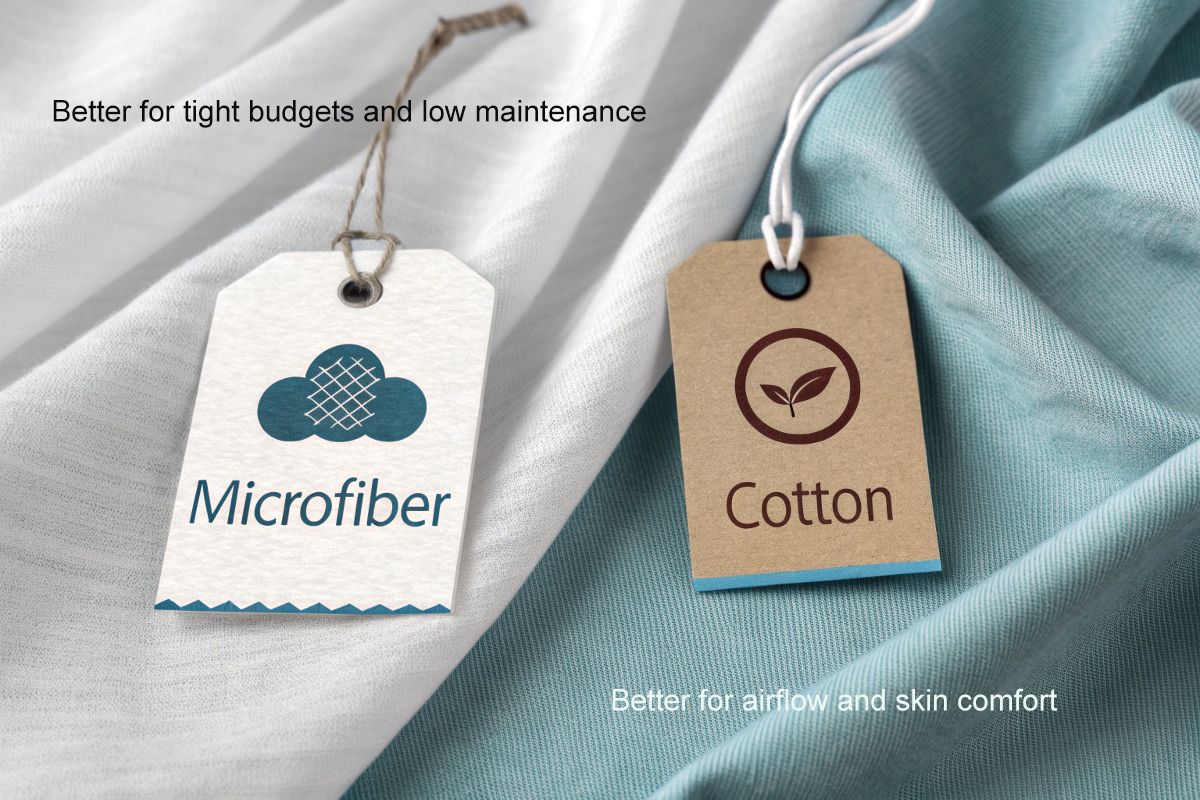
Side-by-Side Sheet Comparison
| Feature | Microfiber | Cotton |
|---|---|---|
| Durability8 | High | Moderate to High |
| Softness | Smooth, synthetic | Natural, softens over time |
| Heat Retention | High (can feel hot) | Low (cooler to sleep in) |
| Moisture Wicking9 | Poor | Excellent |
| Allergy Friendly | Can trap dust | Hypoallergenic if organic |
| Cost | Low | Medium to High |
| Wrinkle Resistance | High | Low |
| Sustainability10 | Synthetic, non-biodegradable | Natural, biodegradable |
This chart can be your go-to when choosing sheets for different seasons or guests.
What Does Science Say About Comfort and Breathability?
You might have felt that cotton is cooler. But is it just perception? Science confirms the difference.
Scientific tests show cotton sheets absorb more moisture and allow better airflow than microfiber sheets.
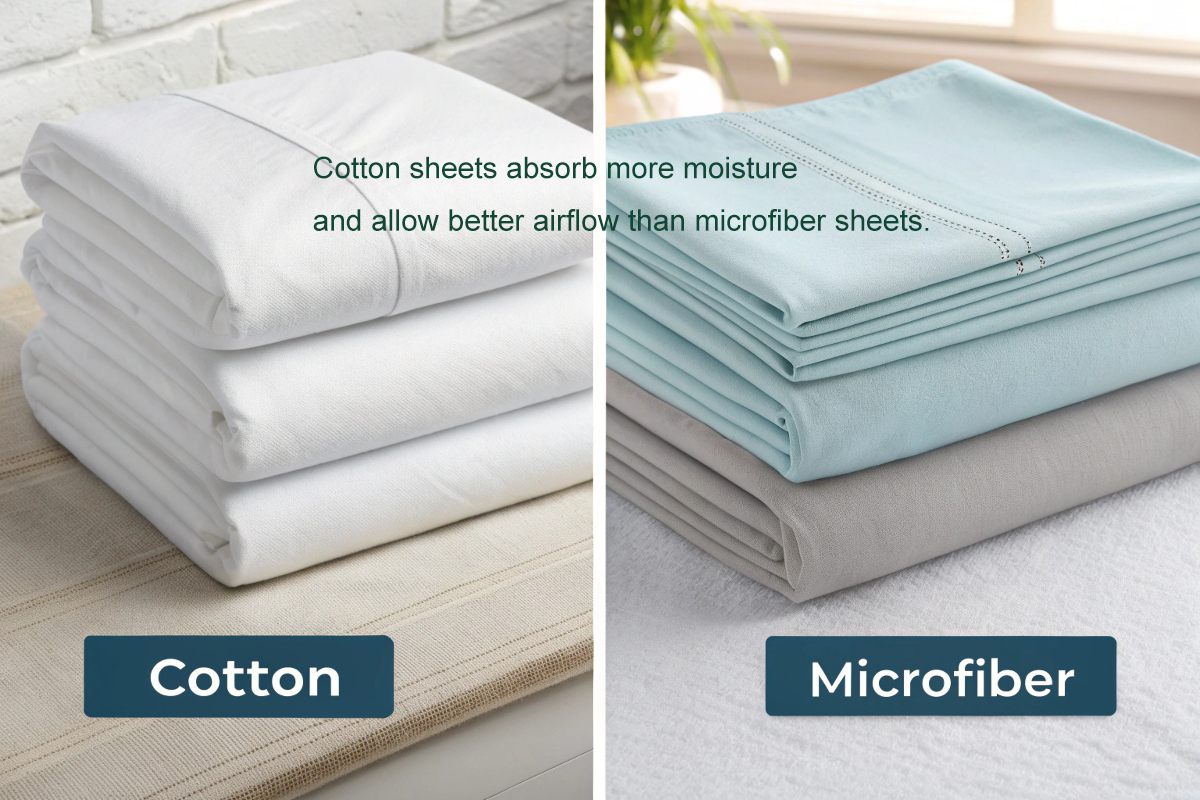
Thermal and Moisture Data
Two lab tests offer clarity:
1. Thermal Conductivity Test11
This measures how well a material transfers heat. Cotton scored 0.041 W/mK (watts per meter per Kelvin), while microfiber scored 0.034 W/mK. That means microfiber retains more body heat—great for winter, not summer.
2. Moisture Absorption Test12
Cotton sheets absorbed 10x more moisture compared to microfiber in lab conditions (up to 27% water absorption versus microfiber’s 2.5%).
That’s why microfiber feels sticky after sweating, and cotton stays drier. If you live in a humid area, cotton will definitely help you sleep better.
What’s the Environmental Impact?
Concerned about sustainability? Microfiber and cotton have very different footprints.
Microfiber is petroleum-based and difficult to recycle, while cotton uses high water but has organic options.
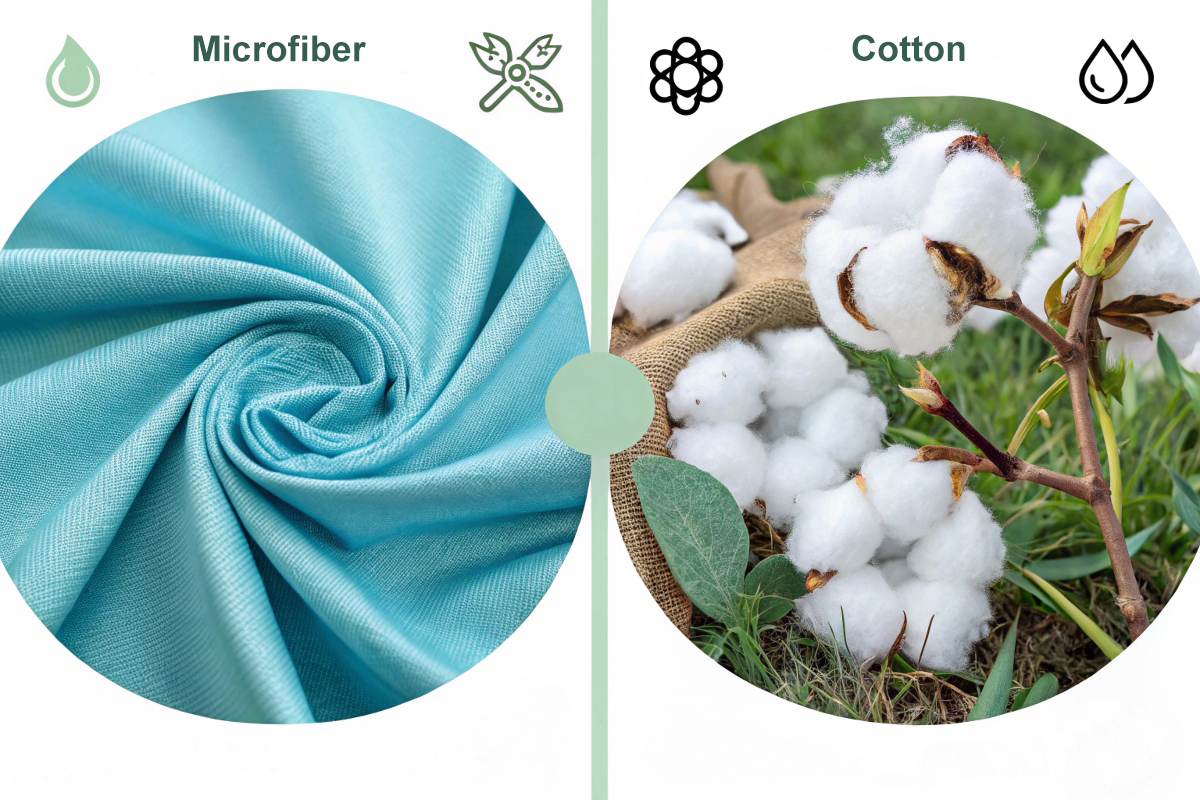
Sustainability Factors
Microfiber’s Environmental Impact:
- Made from plastic polymers
- Releases microplastics when washed
- Non-biodegradable
- Hard to recycle
Cotton’s Environmental Impact:
- Biodegradable
- Requires lots of water
- Pesticides used in conventional farming
- Organic cotton available (uses 91% less water)
If you’re aiming for green bedding, go for GOTS-certified organic cotton sheets13.
What Do Real Users Say?
You can read specs all day, but nothing beats hearing from real users in real situations.
Users in hot climates prefer cotton for coolness. Microfiber wins in dry, cold, and low-maintenance households.
Reviews from Different Climates
- Tina, Florida: “Microfiber sheets made me sweat all night. I switched to cotton, and I sleep cooler now.”
- Erik, Sweden: “Winters here are freezing. Microfiber sheets are warmer, and I don’t mind the static.”
- Lena, Germany: “Cotton sheets take longer to dry, but they feel better on my skin.”
- Ali, Dubai: “Humidity is killer. Only cotton works here.”
So, depending on your local weather, one material might outperform the other.
What About Allergies and Sensitive Skin?
Waking up with itchy skin or a stuffy nose? Your sheets could be the culprit.
Cotton sheets—especially organic—are better for eczema, asthma, and sensitive skin.
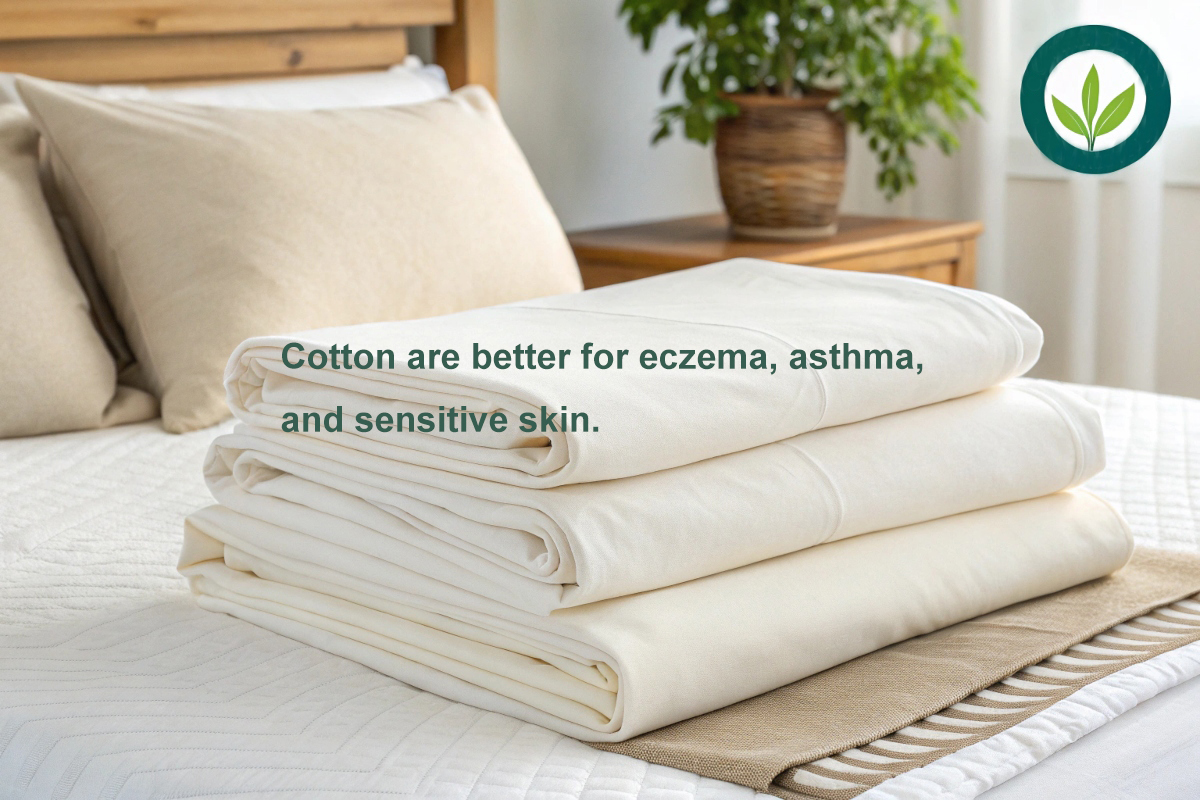
Allergy-Friendly Sheet Selection
Cotton is breathable and doesn’t trap as much dust or body oils. Organic cotton avoids harsh chemical finishes. Microfiber, on the other hand, traps more allergens and dust due to its dense weave.
Best for:
- Eczema: Organic cotton
- Asthma: Cotton (low VOC finishes)
- Sensitive skin14: Avoid dyed microfiber
If your skin breaks out easily, natural fiber with minimal chemical treatment is the safer choice.
What’s the Price Difference?
Budget matters. So how do they compare in cost?
Microfiber sheets usually cost $15–$30, while quality cotton sheets range from $40–$150+.
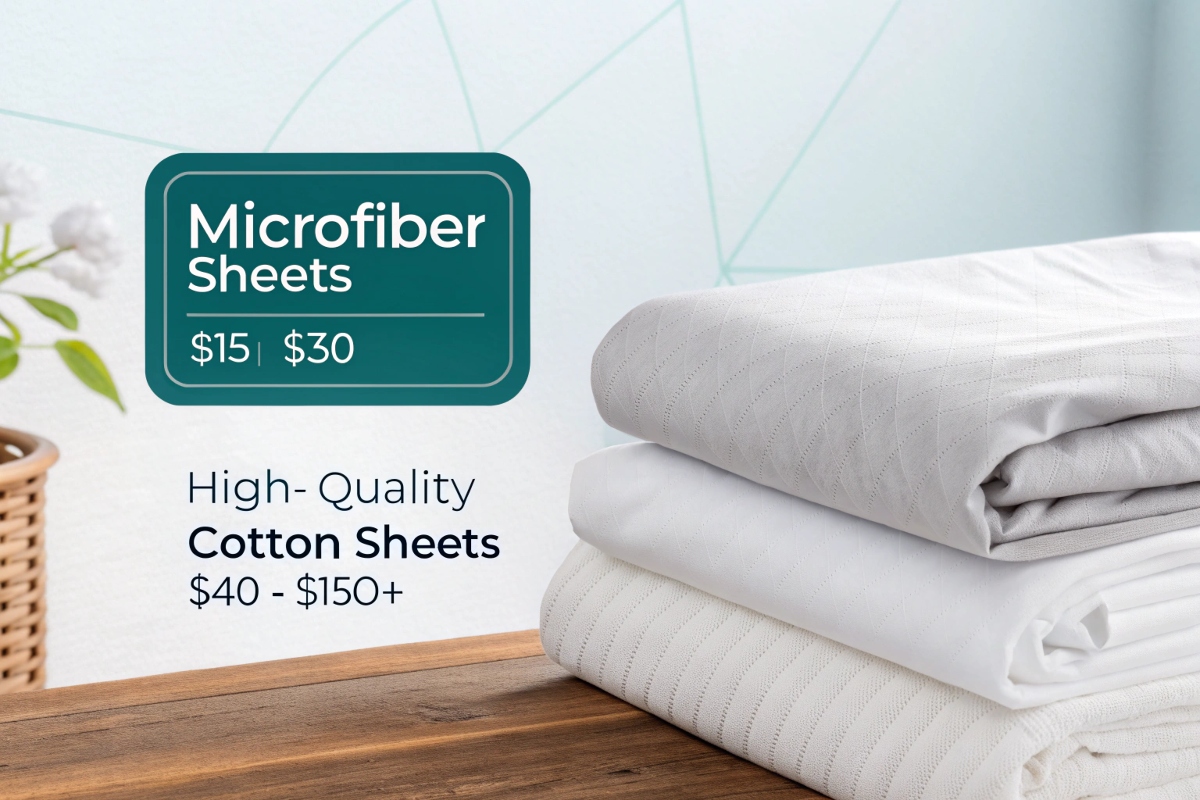
Thread Count15 and Price
Here’s a breakdown:
| Material | Thread Count | Price Range (USD) | Value for Money |
|---|---|---|---|
| Microfiber | Not applicable | $15–$30 | High |
| Cotton | 200–400 | $40–$100 | Moderate |
| Egyptian Cotton | 400–1000 | $90–$200+ | High (luxury) |
Thread count above 400 doesn’t always mean better. Weave quality and fiber type matter more. Microfiber skips the thread count game entirely—it’s sold by GSM (grams per square meter), usually between 80 and 110.
How Long Do They Last?
Both can last years—but they age differently.
Microfiber is resistant to wear but may pill over time. Cotton softens with age but may thin out.
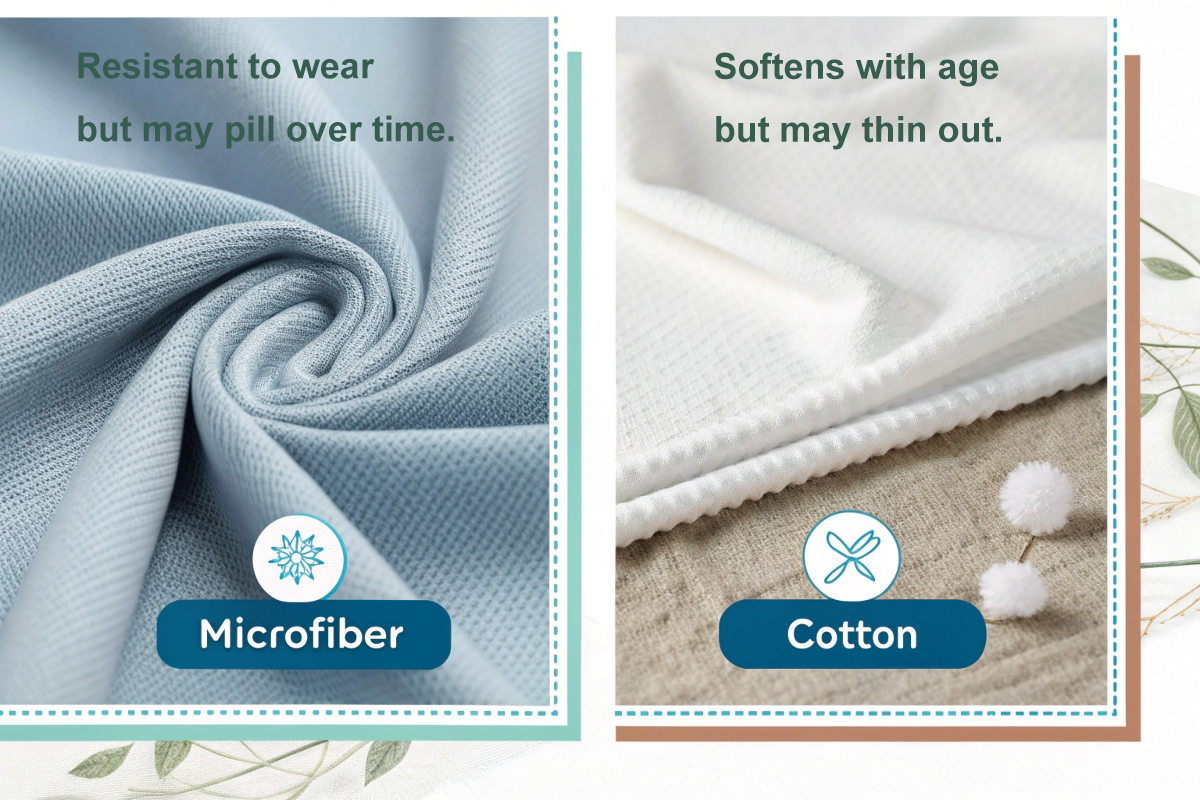
50+ Wash Test
After 50 machine wash and dry cycles:
- Microfiber sheets kept their shape, but pilled in high-friction zones. Color faded slightly.
- Cotton sheets became softer, but had some shrinkage and a more wrinkled appearance.
If you wash bedding weekly, cotton may need replacing after 2–3 years. Microfiber can last 3–5 years but loses its original feel.
How Should You Take Care of Them?
Even the best sheets won’t last without proper care.
Microfiber needs low-heat drying; cotton needs gentle detergent and some ironing to stay crisp.
Washing and Drying Tips
Microfiber:
- Wash cold
- Dry on low heat
- Avoid fabric softeners
- Use gentle detergent
Cotton:
- Wash warm
- Tumble dry low or hang
- Iron if needed
- Use vinegar to remove detergent build-up
Always read labels. For both types, over-drying causes shrinkage or static, and bleach will weaken fibers.
Which Should You Choose?
Let’s match the sheet type to your sleep needs.
Hot sleeper? Go for cotton. Tight budget or cold room? Microfiber wins.
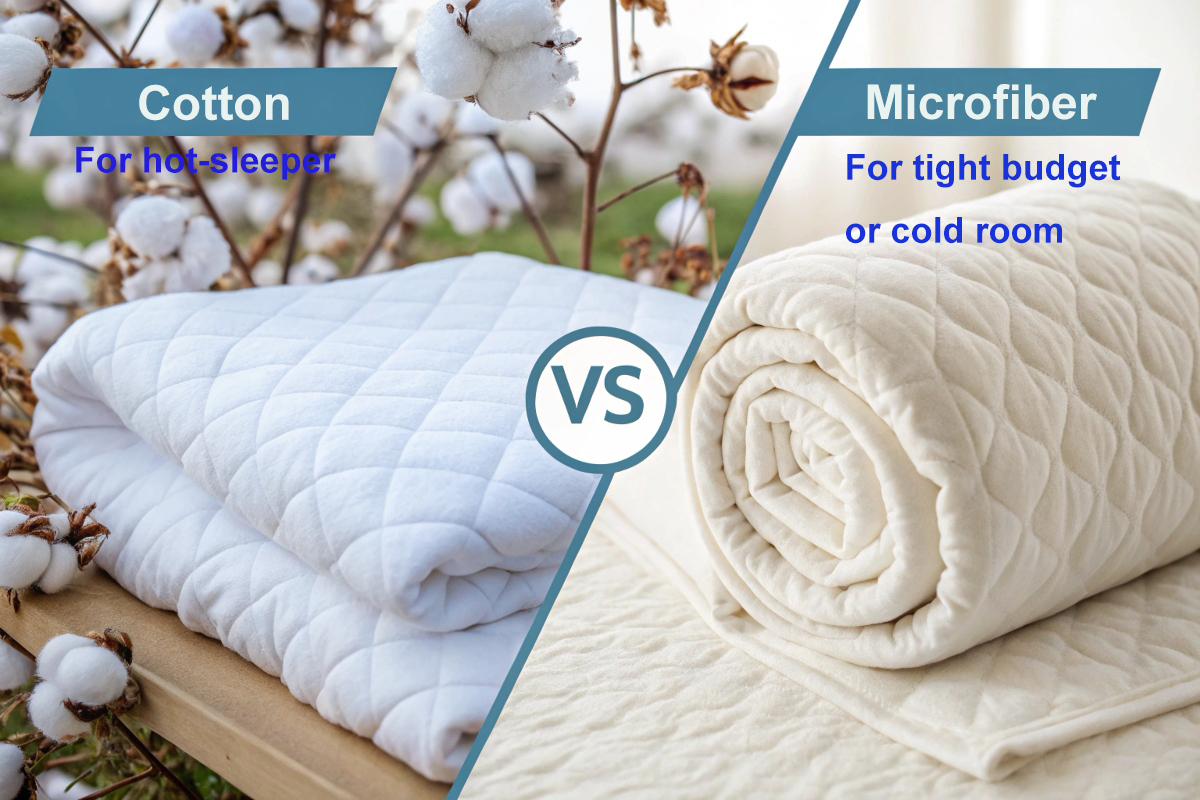
Personalized Buying Guide
| Sleep Need | Best Choice |
|---|---|
| Hot sleeper | Cotton (Percale) |
| Cold climate | Microfiber |
| Sensitive skin | Organic Cotton |
| Eco-conscious | Organic Cotton |
| Budget buyer | Microfiber |
| Easy care needed | Microfiber |
If you still can’t decide, buy one of each and rotate by season.
What Do Experts Say?
Experts back up the science—and the reviews.
Textile engineers and dermatologists recommend cotton for breathability and skin comfort.
Quotes from the Field
- Dr. Angela Fong, Dermatologist: “Cotton, especially unbleached and organic, is better for patients with eczema or irritation.”
- Paul Nash, Textile Engineer: “Thread count is overrated. Fiber quality and weave matter more, and cotton beats microfiber on airflow.”
- Tom Levin, Sleep Coach: “For hot sleepers, microfiber can lead to restlessness. I recommend percale cotton sheets.”
So the expert consensus aligns with what users and data show.
FAQs
Does microfiber cause overheating?
Yes, microfiber tends to trap heat due to its tight weave and synthetic fibers.
Is high thread count always better for cotton?
No. Thread counts over 400 don’t always improve quality. Focus on fiber type and weave.
Conclusion
Cotton sheets win on breathability, skin health, and comfort. Microfiber sheets are best for budget, warmth, and low maintenance.
Elbert Zhao
Founder, Elbert Wipes Solutions
📧[email protected] | 🌐 www.elbertwipes.com
8 production lines | 22 processing lines | OEKO-TEX certified | Walmart-approved supplier
-
Explore the advantages of microfiber sheets, including durability and affordability, to enhance your sleep experience. ↩
-
Discover why cotton sheets are preferred for comfort and breathability, especially for those with sensitive skin. ↩
-
Learn how breathability and comfort contribute to better sleep quality, making your choice of sheets crucial. ↩
-
Understanding breathability in bedding can enhance your sleep quality and comfort, making it essential to explore this topic. ↩
-
Learn about how various bedding materials can affect your skin health, ensuring a better night’s sleep. ↩
-
Learn about percale fabric’s cool and crisp qualities, perfect for a comfortable night’s sleep, and how it compares to other fabrics. ↩
-
Discover the smooth and luxurious feel of sateen sheets, ideal for those seeking a touch of elegance in their bedding. ↩
-
Learn about the durability differences between microfiber and cotton to make an informed choice for your bedding needs. ↩
-
Explore the advantages of moisture-wicking fabrics to understand how they enhance comfort and performance, especially in bedding. ↩
-
Discover the environmental impact of cotton and microfiber to choose more sustainable bedding options for your home. ↩
-
Understanding thermal conductivity is crucial for selecting materials for insulation and comfort. Explore this link to learn more about its importance. ↩
-
Moisture absorption tests are vital for evaluating fabric performance. Discover more about how these tests influence material choice. ↩
-
Explore the advantages of GOTS-certified organic cotton sheets for sustainable bedding and health benefits. ↩
-
Discover the best bedding options for sensitive skin to ensure comfort and avoid irritation while you sleep. ↩
-
Understanding thread count helps you make informed choices about bedding quality and comfort. ↩

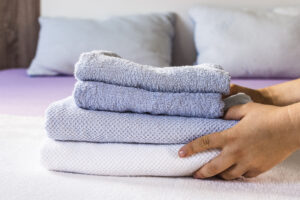
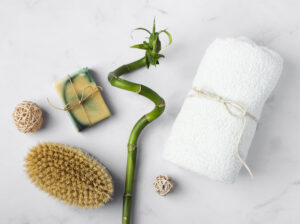



4 Responses
Je recommande vivement Ernestopro.fr pour tous ceux qui recherchent des solutions de qualité pour leur linge de maison, notamment dans le contexte de la comparaison entre microfibre et coton. Leur expertise et leur large gamme de produits garantissent un confort optimal, une durabilité accrue et un respect de l’environnement. Avec Ernestopro.fr, vous êtes assuré de faire le meilleur choix pour votre sommeil tout en prenant soin de la planète. Leur service client est également remarquable, toujours prêt à conseiller en fonction de vos besoins spécifiques. N’hésitez pas à consulter leur site pour découvrir leurs offres qui répondent parfaitement à vos attentes.
Thanks!
Your article helped me a lot, is there any more related content? Thanks!
Appreciate you like it!